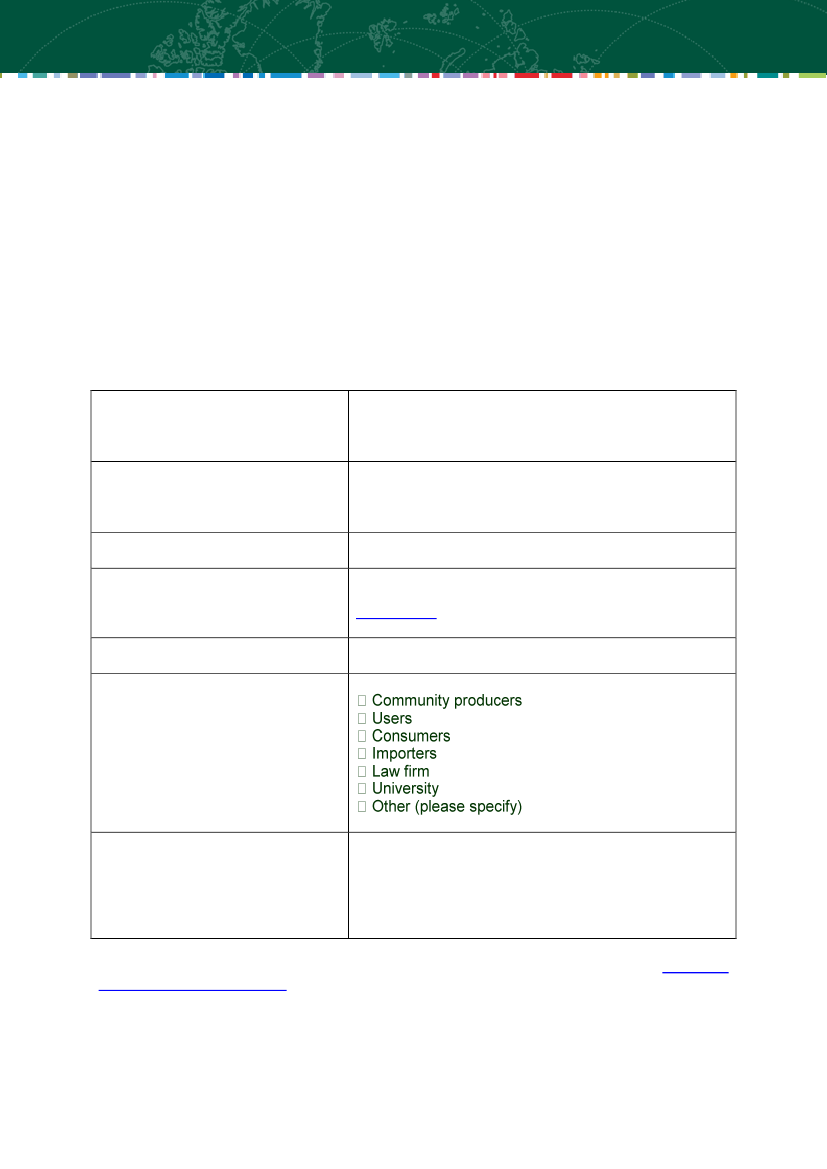
GLOBAL EUROPE
Europe's Trade Defence Instruments in a changing global economy
A Green Paper for public consultation
Questionnaire
Name of organisation/individual Government of Denmark
Ministry of Economic and Business Affairs
National Agency for Enterprise and Construction
Address of organisation/individual Dahlerups Pakhus
Langelinie Allé 17
DK-2100 Copenhagen
Country Denmark
Telephone +45 35 46 60 00
Fax +45 35 46 60 01
e-mail
Date of submission 30 March 2007
Organisation/individual belonging to X public administration
the following category
If organisation, please provide
some economic key figures, e.g.
turnover and employment and any
other figure that you consider
relevant.
Replies to the questionnaire should reach the Commission by
31 March 2007
at:
Trade-tdi-
Comments received will be made available on-line unless a
specific request for confidentiality is made, in which case only an indication of the contributor
will be given.
1